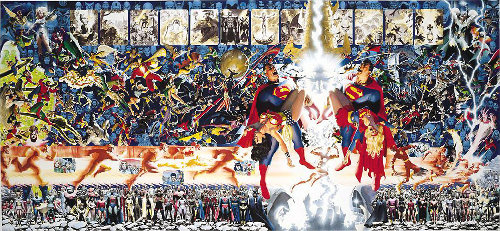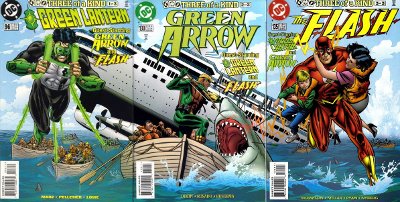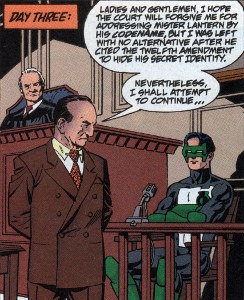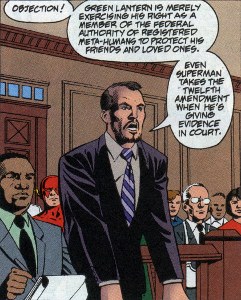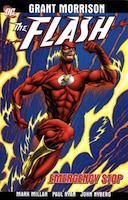The Victoria Advocate profiles Doug Hazlewood.
Comics In Crisis presents Flash v.2 #182 (2002), the Captain Cold Rogue Profile story, among the 10 Essential Bronze Age Comic Stories You Should Read. I’d disagree with the Bronze-Age classification (traditionally, the Bronze Age of Comics ran from the 1970s through mid 1980s, with Crisis on Infinite Earths being a good reference point for DC books), but it’s absolutely a must-read.
X-Man reviews Flash vol.2 #1 (1987), noting how different Wally West was at the age of 20 than he is today. That’s actually one of the things Wallys’ long-term fans like most about the character: that we’ve seen him grow and change naturally, rather than simply be given a personality transplant whenever a new writer shows up.
The Quantum Blog talks about TV shows canceled before their time, including the 1990-1991 Flash TV Series. (Hard to believe it’s been almost 20 years. Seriously, Quantum Leap is having a 20th Anniversary convention this month. I feel old…)
The Worlogog celebrates Weird Silver Age Tales of the Flash.
I haven’t had a chance to listen yet, but Raging Bullets Podcast #152 features Flash’s Rogues with listener guest Mike Simms.
Heritage Auctions will be selling a CGC 9.6 copy of Showcase #4, the comic that rebooted the Flash as Barry Allen, launching the Silver Age (via It’s all Just Comics)
A Journal of Zarjaz Things looks at Flash: Emergency Stop, griping that Grant Morrison’s 9-issue run is split across two trades with the second “padded” out with a 3-parter by Mark Millar. IMO, though, Morrison didn’t write a 9-issue Morrison run — he co-wrote 9 issues of a 12-issue Morrison/Millar run. It would have been less responsible for DC to print only the Morrison issues and leave out “The Black Flash,” which has arguably had more lasting impact on the Flash mythos than the other stories in these trades, good as they are. (It is silly that they left out the first two parts of “Three of a Kind,” though.)


